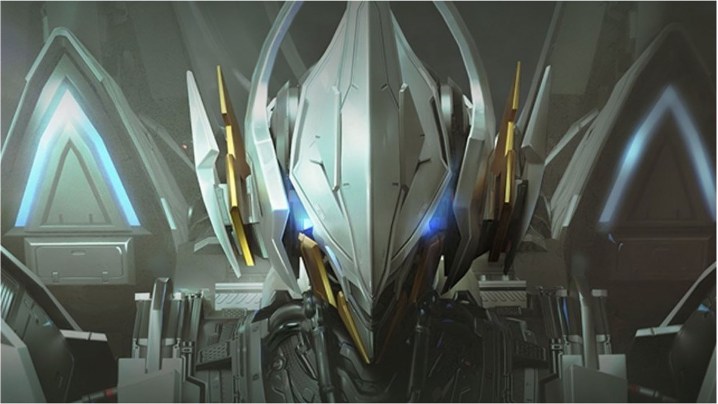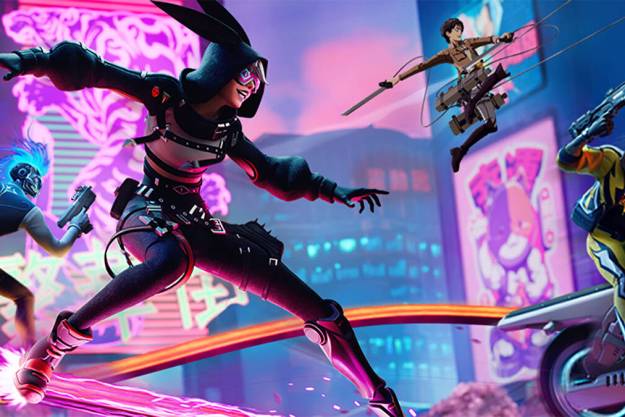
Mecha Break isn’t the kind of multiplayer game you can master right away.
You might equip a lance that you barely know how to use because it seemed like a good idea, and spend the rest of a round attempting to bash yourself into enemies to help your teammates. It incorporates action that’s more similar to that of Armored Core 6: Fires of Rubicon than it is to the shooter-focused gameplay in Gundam Evolution, Bandai Namco’s multiplayer mecha shooter that shut down last year. Overwatch does come to mind, but in a way where mechs are still the focus rather than the pilots within them.
When I tried it for myself at this year’s Game Developers Conference, I played in a 6v6 tournament on one map that involved capturing keys and uploading them to terminals. After that, I dove straight into the newly announced 60-player battle royale mode, Mashmak. It hadn’t been solidified into a game mode at the time of the alpha at the beginning of the year, so GDC was the first time anyone was able to test it. The flashy, layered combat system was enough to hook me thanks to its diverse selection and customization. Mashmak is an especially strong mode that challenged me to think on my feet and experiment with my kit.
Mashmak has an easygoing vibe that reminds me of shooter-based battle royales — something that you could play with a group of friends to just catch up with each other. It also gave me a chance to admire Mecha Break‘s futuristic, sci-fi landscape before it forced us to pick each other off. Like in Fortnite and Call of Duty, the safe zones shrink until players have no choice but to fight. If you dare venture into the storm, it deals damage and jams signals until you either crash or escape.
I went hands-on with only two mechs, Panther and Falcon, but there are currently seven of them in total. Most of them fit into specific roles that can determine how effective your team comp is. For example, Tricera is a thorough defender that became a staple on every team for its shielding and missiles. Luminae, a support unit, also became a popular choice for its healing, though one of the winning teams in the tournament decided to ditch it entirely to focus on offense. We had two teammates who were seasoned veterans that helped us quickly learn the ropes.
The Mecha BREAK Closed Beta recruitment is now open. Join us to forge a mecha combat experience filled with blitz, brawl, and blaze! Sign-up here:https://t.co/0k1vKy6ooS pic.twitter.com/gJPWaCDwoJ
— Mecha BREAK (@MechaBREAK) March 21, 2024
I started with Panther, a brawler class that attempts to balance offense and defense. Unfortunately, I had a hard time keeping up with speedier teammates. Sure, I could pull out my shield to temporarily protect myself from enemy fire or bash into a nearby unit to finish them off, but it was a suicide mission to dive into a firefight because of Panther’s slower speed and limited shield strength. I equipped a lance, which might not have been the best choice because of how slow it was to even approach enemies to joust them. Falcon was the opposite. Its agile build leaned into aerial combat that made it easier to avoid conflict while picking off enemies from afar. However, it was much easier for heavy-hitting melee units to take advantage if I flew too close to their territory.
If you want to try the action for yourself, Amazing Seasun is currently accepting applications for its closed beta for PC. You can sign up now from the official website or find the link on the company’s social media. Based on what I’ve played so far, you might want to sign up.
Mecha Break is currently in development for PlayStation 5, PC, and Xbox Series X/S.
Editors' Recommendations
- Visions of Mana paints a promising picture of the RPG series’ return
- You can play as Resident Evil 4’s Leon Kennedy in Tekken 8 … sort of
- Xbox Games Showcase can succeed where the PlayStation Showcase struggled
- The best skills to buy first in Star Wars Jedi: Survivor
- The Lord of the Rings: Gollum is unintentionally delightful




